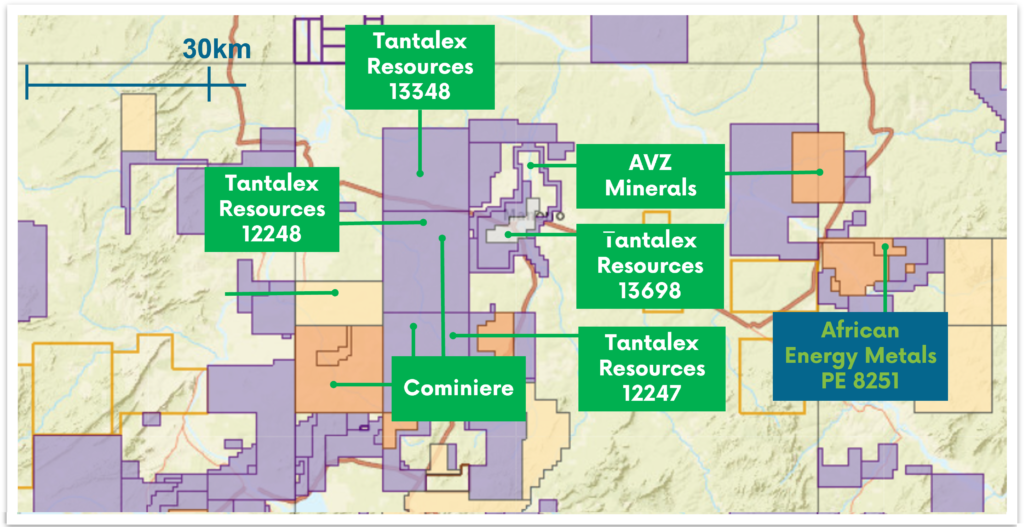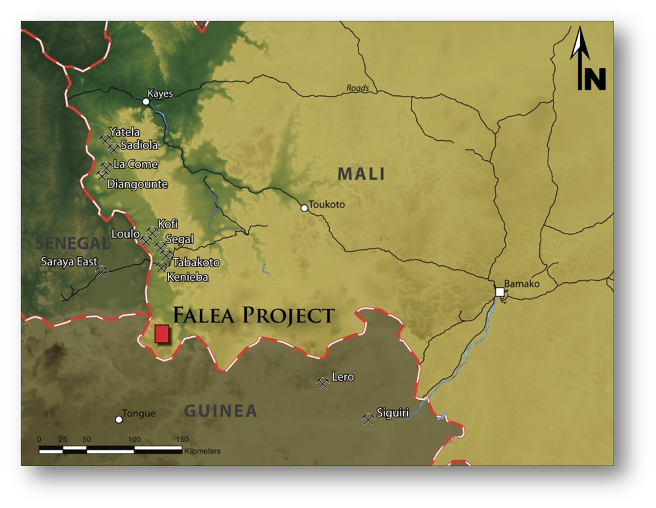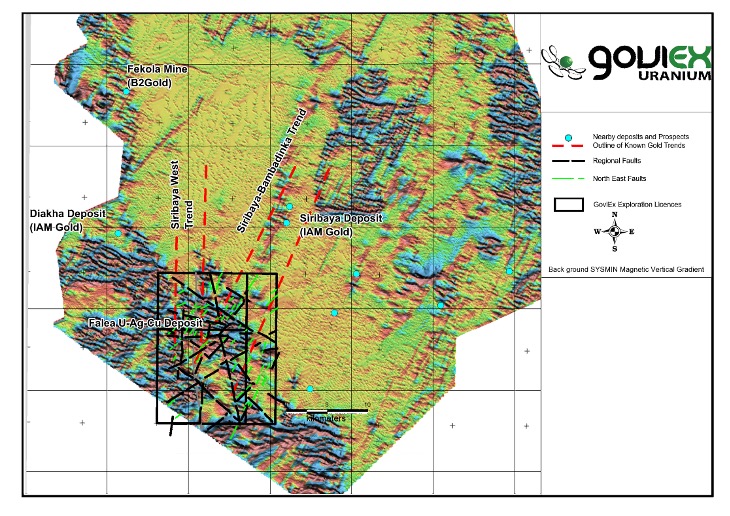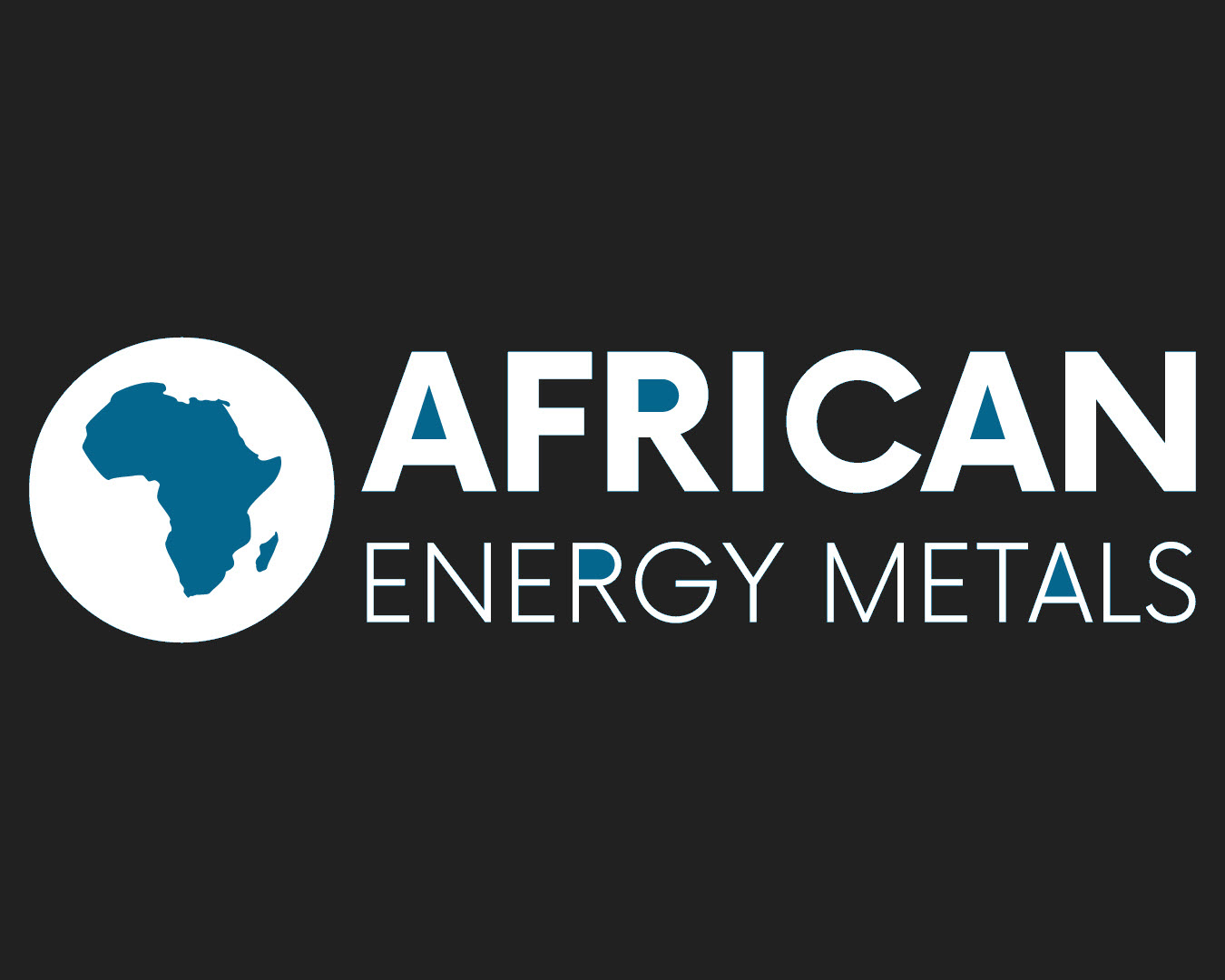Projects
African Energy Metals is a natural resource company primarily focused on the acquisition, exploration, and development of energy metal (CO-CU-LI) mineral projects in the DRC to world-class Canadian standards. This will address the supply chain, custody, and verifiable sources of ore issue being imposed on processors in the DRC by consumers.
Manono Projects - Lithium, Tin, Tantalum, Rare Earths
African Energy Metals is positioning itself as a large concession holder with 200 Kms² of clean title concessions and an intension to acquire interests in additional Manono concessions.
Manono Location

Manono Facts
Some key facts relating to this project:
- 440 Kms Northeast of Lubumbashi accessible by air and road
- New area play expected to exceed Kolwezi in terms of size and importance to the DRC mining sector
- Historical tin and tantalum mining now to be surpassed by lithium and rare earths
- Infrastructure being built with a new road connecting Lubumbashi expected to be completed in the next year and a new railroad being completed in the next two years to connect with ports
- Chinese are buying up land which is not for mining but for plants, infrastructure, and commercial use
- Largest concession holder is Cominiere which is a parastatal company but is involved in a major title dispute
- Attention is centered around the AVZ Minerals world class lithium deposit which is also involved in a title dispute
- African Energy Metals is a large concession holder at 30 Kms² and with clean title and intends to acquire interests in additional Manono concessions
Concession Map

PE 8251 Concession Highlights
- Letter Agreement Option signed to enter a 50/50 JV with no set spending requirements and exclusivity fee paid
- 30 Km² property located 35 kms east of world class AVZ Minerals 400mt lithium deposit average grade 1.7 % and highly prospective for lithium, tin, and tantalum
- Mineralization runs in NE/SW parallel zones
- Historical tin production and project has an estimated 25,500 MT of tin at a grade of 5% in just a small area that can be expanded
- Tin has been trading in the US$32,000/t range
- Project was intelligently acquired by a metallurgist working with a geologist who worked on the AVZ Minerals development for 5 years and very familiar with the style of lithium mineralization
- Spodumene hosted in pegmatite observed on the concession
- Project already converted from an exploration to an exploitation permit with a long life and can immediately produce on a small-scale mechanized basis to generate cashflow
Falea Project - Mali
Summary
- Unconformity type polymetallic deposit located at unconformity between Taoudeni Carboniferous- Neoproterozoic Basin and Birimian Greenstones
- Three licenses: Bala, Madini, and Falea.
- Mineral resource (October 2015) of 17.4 Mlbs U3O8 contained in the Measured and Indicated, and 13.4 Mlbs U3O8 contained in the Inferred category.
- In addition, contains 24 Mlbs Cu and 16 Moz Ag contained in the Measured and Indicated and 39 Mlbs Cu and 5 Moz Ag contained in the Inferred category.
- Only 5% of the 225 km2 land package has been explored.
- Most known ore zones remain open for exploration.
- Considerable technical and environmental work completed to date.
- Forecast underground mining operation.
- Process route includes recovery of copper and silver.
- Road and air access, including a gravel airstrip on-site.
- Gold potential within the Madini licences.
Project Description

Falea polymetallic (uranium, silver, and copper) deposit is located in Mali, West Africa approximately 350 km west of Bamako, the capital of Mali, and approximately 240 km south of the city of Kayes. The nearest town is Kenieba, which is an 80 km drive north from the project area. The Project is located approximately 80 km to the east of AREVA’s Saraya East uranium deposit in Senegal and approximately 13 km along trend from IAM Gold Inc.’s Siribaya gold deposit. GoviEx acquired the Property from Denison Mines Corp. (Denison) in June 2016. The Property comprises three contiguous exploration permits, namely the Falea, Bala, and Madini Permits. The reported Mineral Resources are wholly contained within the Falea Permit.
Within the Madini permit, anomalous gold in soil was recently confirmed along the Siribaya trend along which other companies have discovered gold deposits. The company is investigating this potential further.
The polymetallic mineralization at Falea is hosted in the Neoproterozoic to Carboniferous sedimentary sequence of the Taoudeni Basin, a shallow interior sag basin with flat to very shallow dips. The Taoudeni Basin is located over a large portion of the West African Craton between the Reguibal Shield to the north and the Leo Shield to the south and encircles the Pan-African Belts to the west and east. The Taoudeni Basin is underlain by the Birimian greenstones which have been intruded by uranium-bearing Saraya granites.
The deposition of the Taoudeni Basin sedimentary sequence within the Project area was largely controlled by north-south and east-southeast trending structures. The orientation of the structural trends is coincident with the structural orientations within the Birimian greenstones. A dolerite sill ranging in thickness from a few metres to more than 160 m is present throughout most of the basin, intruding 65 m to 120 m above the Kania sandstone and forming prominent cliffs in the area.
Most of the mineralization at Falea occurs in the flat lying Kania sandstone, which is underlain and overlain by argillaceous units. The Kania sandstone is located near the bottom of the Taoudeni Basin sequence. The mineralization is interpreted as an unconformity type uranium deposit, since it is associated with the unconformity between the Kania sandstone and the underlying Birimian greenstones.
Geological Settings

Uranium, silver, and copper mineralization at Falea was first discovered by COGEMA in the 1970s at the Central Zone. Drilling by Rockgate began in the Central Zone and progressed northward, resulting in the discovery of the North Zone in late 2007 and the high-grade Plateau Edge Structure (PES) in late 2009.
The North Zone discovery was significant because it hosts higher uranium grades than Central Zone in addition to strong silver grades associated with native silver mineralization throughout much of the zone.
The Falea deposit is interpreted as an unconformity-associated uranium deposit. It occurs at or just above the unconformity between the Birimian and overlying sedimentary sequences, within the Kania Sandstone as well as the underlying basal conglomerate. It is interpreted that proximity to the Road Fault, a reverse fault that strike North-South could have introduced enriched fluids into the sandstones.
Unconformity-associated deposits are high-grade concentrations of uranium that are located at or near the unconformity between relatively undeformed quartz rich sandstone basins and underlying metamorphic basement rocks.
The compositional spectrum of unconformity-associated uranium deposits can be described in terms of monometallic (simple) and polymetallic (complex) end-members on the basis of associated metals. Polymetallic deposits are typically hosted by sandstone and conglomerate, situated within 25 m to 50 m of the basement unconformity. Polymetallic ores are characterized by anomalous concentrations of sulphide and arsenide minerals containing significant amounts of nickel, cobalt, lead, zinc, and molybdenum. Some deposits also contain elevated concentrations of gold, silver, selenium, and platinum-group elements.
Resource Table - 2015
| Category | Tonnes (Mt) | U3O8 (%) | Cu (%) | Ag (g/t) | U3O8 (Mlb) | Cu (Mlb) | Ag (Moz) |
| Indicated Mineral Resource Estimates | 6.88 | 0.115 | 0.161 | 72.8 | 17.40 | 24.4 | 16.11 |
| Inferred Mineral Resource Estimates | 8.78 | 0.069 | 0.200 | 17.3 | 13.40 | 38.7 | 4.90 |
Notes
- CIM definitions were followed for classification of Mineral Resources.
- Reported above a cut-off grade of 0.03% U3O8, based on a uranium price of US$75/lb.
- Bulk density is 2.65 t/m3.
- Numbers may not add due to rounding.

